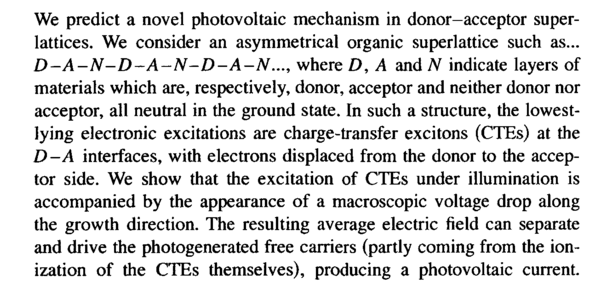|
|

| VOLUME 62 (1995) | ISSUE 5 |
PAGE 418
|
Photovoltaic effect in asymmetrical donor-acceptor organic superlattices
Agranovich V. M. , La Rocca G. C., Bassani F.
We predict a novel photovoltaic mechanism in donor-acceptor super-lattices. We consider an asymmetrical organic superlattice such as... D-A-N-D-A-N-D-A-N..., where D, A and N indicate layers of materials which are, respectively, donor, acceptor and neither donor nor acceptor, all neutral in the ground state. In such a structure, the lowest-lying electronic excitations are charge-transfer excitons (CTEs) at the D-A interfaces, with electrons displaced from the donor to the acceptor side. We show that the excitation of CTEs under illumination is accompanied by the appearance of a macroscopic voltage drop along the growth direction. The resulting average electric field can separate and drive the photogenerated free carriers (partly coming from the ionization of the CTEs themselves), producing a photovoltaic current.
|
|


